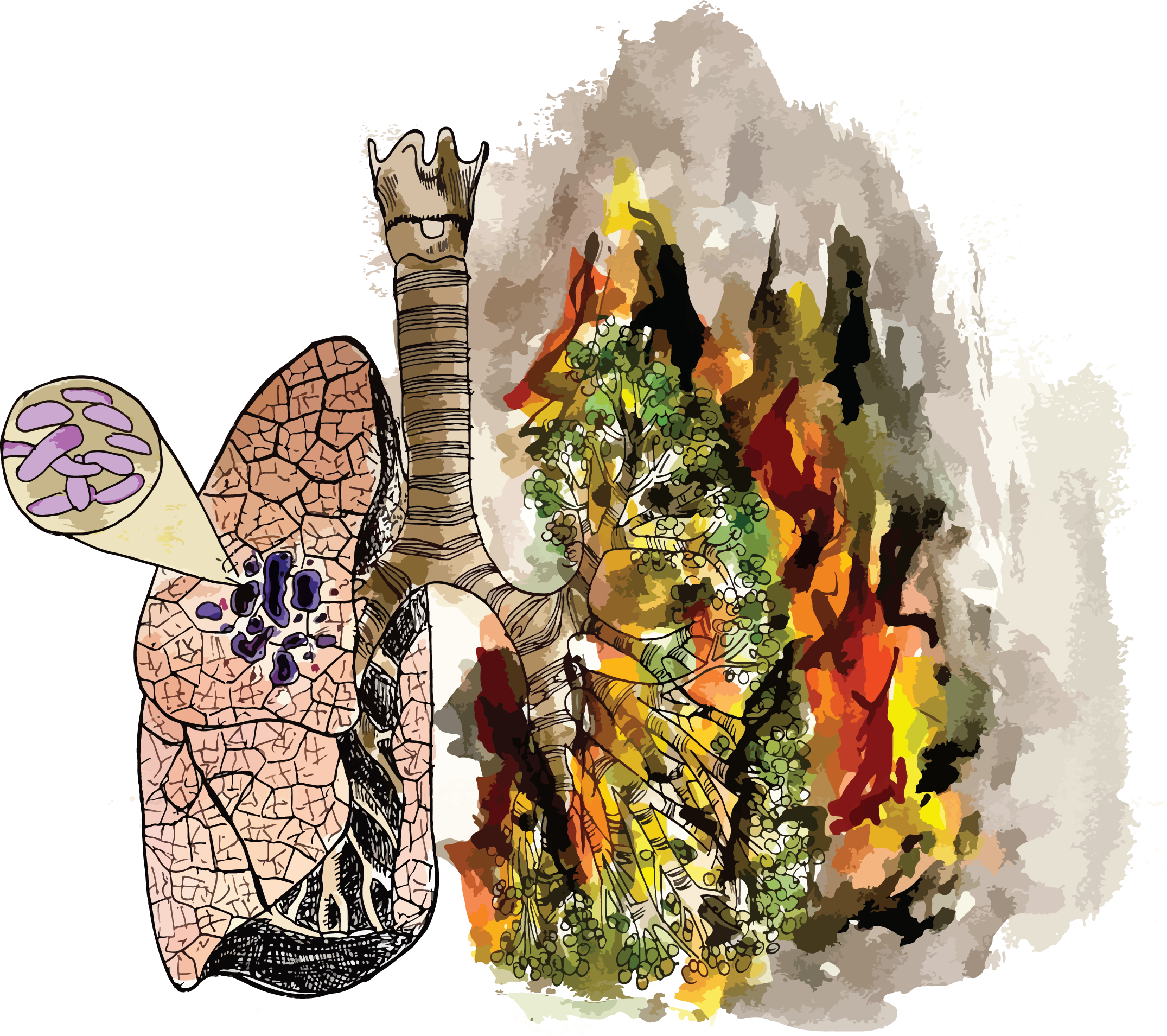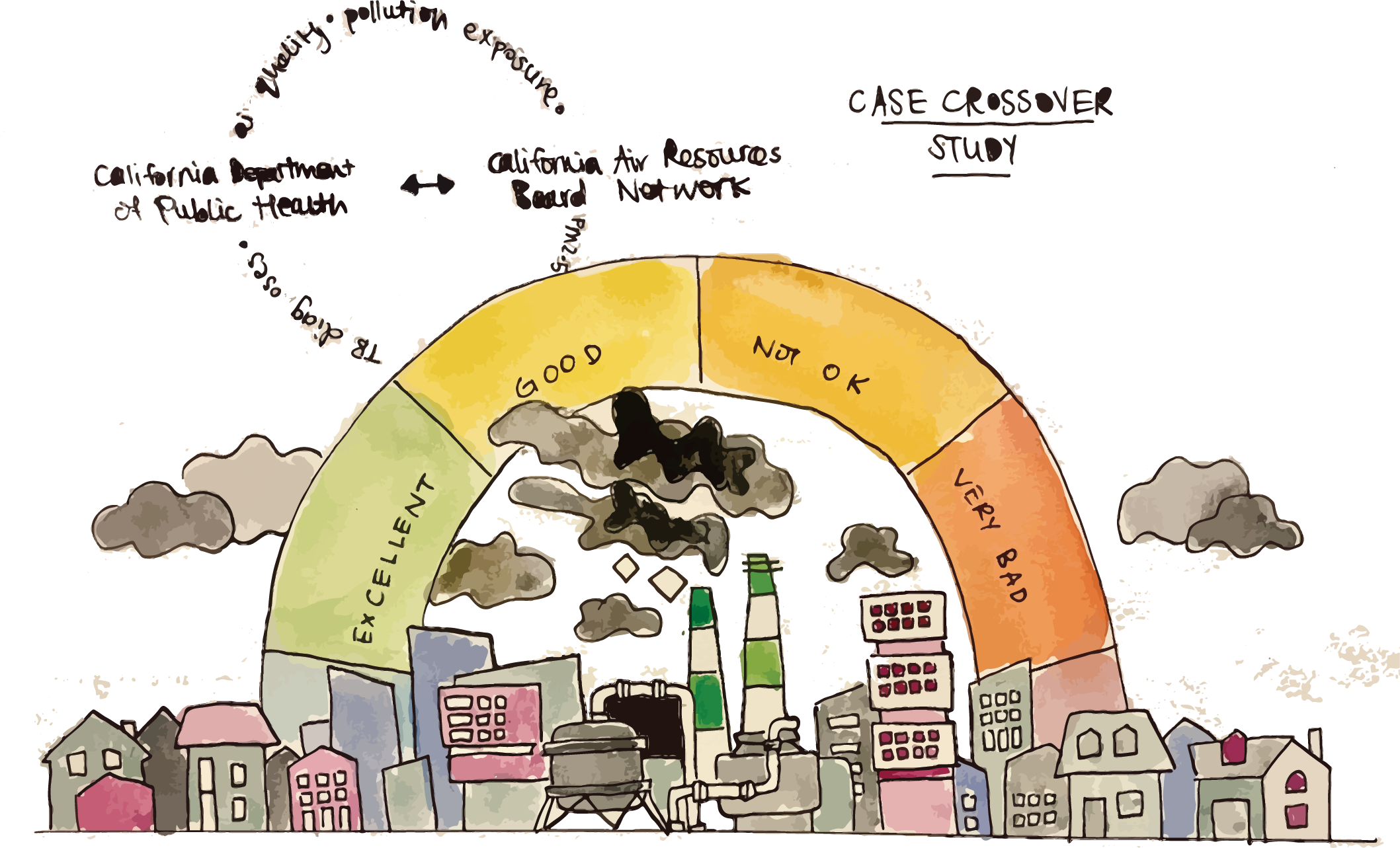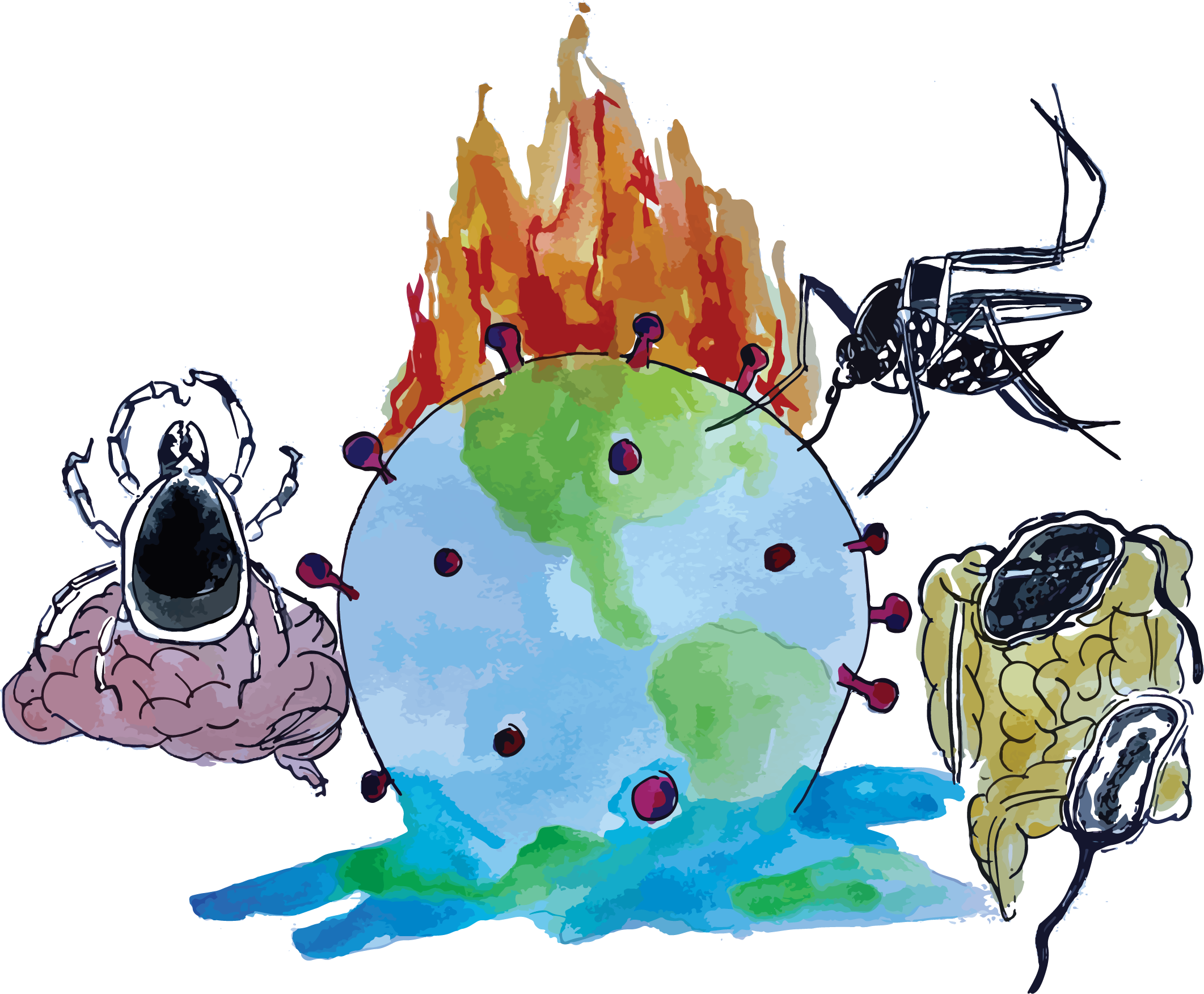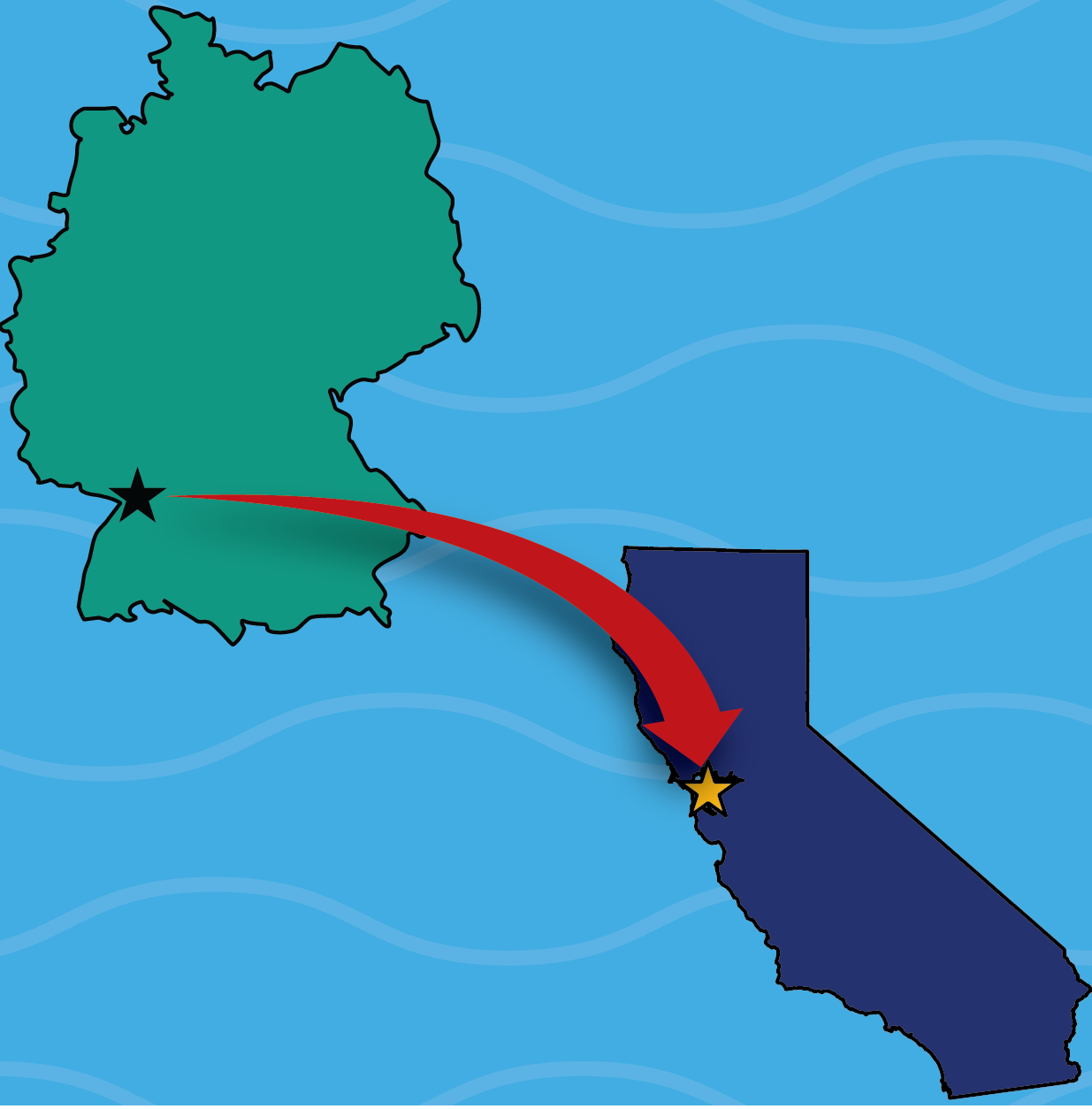Spreading like wildfire
A surprising force behind California's tuberculosis epidemic

I. Inspiration
Lauren Linde moved to Los Angeles in 2014 to investigate an outbreak of a disease not many Californians were thinking about at the time: tuberculosis (TB). The highly contagious virus was spreading through unhoused populations in the city’s infamous Skid Row, and Linde was fighting desperately to combat its spread. After two years, her work with the Centers for Disease Control moved her to Colorado. When she moved back to California the following year for a joint master’s program in public health and city planning, she knew she wanted to study TB from a fresh angle that could bring elements from both departments together.
Linde was inspired by a 2017 study that established a correlation between air pollution from traffic and the outcomes of active TB cases in California. Led by pulmonologist Robert Blount at the University of California, San Francisco, researchers followed 32,000 patients with TB and monitored the traffic volume and density near their homes. They found higher mortality rates among patients who were exposed to high levels of traffic versus those with low levels.
With years of experience studying TB and working on outbreak control, Linde’s interest in the traffic study led her to turn toward a source of air pollution that has dominated California skies in recent years: wildfires.
“Living in California in the last five years, it's been such a big, massive period for wildfires,” she says. “You can’t really help but wonder, what is this doing to me? What is this doing to the patients I work with?”
In the last decade, researchers have increasingly used epidemiological methods to study the impacts of wildfire smoke on things like pregnancy and respiratory emergencies as residents across the state feel the immediate impact of large wildfire events on their health.
“It’s really well-established that wildfire smoke is horrendous for you,” says Linde. “But there just really hasn’t been consensus—or all that much research—around ambient air pollution and what impact that could be having on TB.”
II. The study
Linde enlisted her colleagues to examine the relationship between two public health concerns more prevalent in California than in any other state: wildfire smoke and TB. The former has been on the minds of researchers and residents for decades, as a combination of climate change and forest management practices has exacerbated wildfire conditions and has led to months of disastrous smoke exposure across the state.
The latter is the second-most deadly infectious disease in the world (after COVID-19). While the burden of TB is mostly felt by people in Asia and Africa, of the 7,882 cases in the United States in 2021, 22 percent of them were in California. In addition to the significance of both study factors, the team’s location in California also provides a third requirement of their study: a preponderance of publicly available data.
Combining state-collected data on TB diagnoses with air quality monitors and satellite images, Linde and her team find that wildfire smoke exposure is positively linked to an increased number of TB diagnoses. This data comes in part from the California Department of Public Health, which collects information about every TB patient in the state. Linde and her colleagues use the patients’ street addresses to assess their air pollution exposure.
The next source of data comes from the California Air Resources Board network, which includes more than 250 air monitoring stations across the state. These monitors measure a variety of pollutants, including particulate matter (PM2.5), a tiny pollutant found in wildfire smoke that is particularly detrimental to human health. With this data, the team have counted the number of days each patient was exposed to a heightened level of PM2.5 in the two years leading up to their TB diagnosis.
Linde’s study marks a breakthrough in the way TB is studied. “You want to develop a study design where you’re looking back at exposures and linking it to outcomes that are less common,” explains Dr. William Checkley, associate professor of medicine at Johns Hopkins University, who wrote a review of the study. This type of study, called a case-crossover analysis, is frequently used to analyze whether being exposed to something might trigger a particular outcome. “It’s an elegant type of study design,” says Checkley.
In a case-crossover study like Linde’s, each participant acts as their own control: sometimes they are exposed to smoke, and sometimes they aren’t. But, as Linde says, the design isn’t typically used for infectious diseases like TB. “The case-crossover analysis is best for things where it's like a really acute event,” she says. TB can take weeks or months to diagnose, and it often sits latent before producing symptoms. This means that the date of a patient’s diagnosis may be significantly later than the date they contracted the disease, making it harder to study compared to health effects like asthma attacks, the timelines of which are much easier to pinpoint.
To combat this, Linde and her team use an array of exposure timelines, from 90 to 180 days before diagnosis. The association they find increases the more time they include. While Linde hypothesized originally that smoke exposure and tuberculosis might be linked, she was pleasantly surprised to be able to distinguish a relationship with this type of study for a disease so difficult to place on a timeline.

III. Highlighting inequalities
In addition to the discovery of the link between wildfire smoke and TB cases, this study reveals some of the structural inequalities currently impeding epidemiological research. First, Linde explains, the dearth of air quality monitors in rural areas of California means the study was limited to patients in the eight most urban counties in the state. Second, because the researchers rely on patients’ residential addresses to determine their air pollution exposure, they couldn’t include any patients without a consistent home address. Many unhoused people fall under this category, and their exclusion frustrates Linde, as this community is often the most at risk for both increased air pollution exposure and TB infections. Third, the research team has no way to factor in whether a patient traveled or spent more or less time outside during the exposure period. “You have to make a lot of assumptions about people’s exposure,” says Linde.
Not everyone has the same opportunity to mitigate their smoke exposure, explains Linde. For agricultural workers or others who work outdoors, escaping smokey days may not be an option. For those experiencing homelessness, staying indoors with air filtration may not be an option. Linde hopes that future studies allow her to study air pollution and TB in the most vulnerable populations—the ones she came to California to study almost a decade ago. She explains that many unhoused people do stay in the same place each day, and she hopes that soon there will be a way to include that address, even if it isn’t an official residence.
While California’s widely available air quality data makes this research possible, Linde knows that the impact of her study is likely most relevant to countries with the highest incidence of TB. Almost half of global TB cases are found in Southeast Asia, and another quarter are in Africa. The burden of TB has, for decades, fallen on the shoulders of some of the world’s poorest countries (and, within them, the poorest people). These countries often lack the infrastructure to both treat and study TB.
“If you look at Africa, there is very little monitoring data available,” says Dr. Stephan Schwander, director of the Center for Global Public Health at Rutgers University. “It's a huge continent, many, many people, and we don't know much about Africans and exposures. And that's where tuberculosis plays a big role.” Schwander has spent much of his career studying air pollution in Uganda, where the lack of infrastructure has impacted researchers’ ability to study public health in the way that Linde could do in California.
This impacts the ability of developing countries to work toward global goals to eradicate TB. “To get rid of TB, it will not only work by having new diagnostics and new treatments; we need to think about the social determinants,” says Schwander. “And so, air pollution is one major concern we should really think about.�”
Poverty has long been considered a risk factor for TB, and numerous studies have sought to clarify this relationship. A 2008 study links TB incidence to per capita gross domestic product, but on an individual level, the causes and effects of air pollution are complicated. In some ways, exposure to elevated levels of air pollution is a consequence of poverty. A lack of health services and inadequate nutrition make both diagnosing and treating TB more difficult, which can perpetuate the spread of the disease. Additionally, developing countries like Uganda are often plagued with poor air quality due to congestion, expanding infrastructure, and burning of fossil fuels.
Even though it’s more difficult to study TB in places with less infrastructure, Schwander explains that it’s necessary if we want to curtail the spread of the disease. “Since that is where the burden of disease is, we need to do a better job,” says Schwander. “In California, studies can provide principal ideas. But the impact on the ground in other places should be studied.”
IV. TB in a changing climate
Linde’s research also provides a concrete example of the larger connection between climate change and public health. A recent analysis in Nature illustrates the links between climate change and the presence of disease-carrying organisms. Rising temperatures and changes in precipitation can increase the presence of organisms such as mosquitos, ticks, and birds. These organisms can increase the spread of diseases such as dengue, Zika, and malaria. Additionally, storms and floods, which are often exacerbated by climate change, can lead to wastewater catastrophes that aggravate noroviruses, hantavirus, and hepatitis.
“Climate change will add a lot of stresses on already stressed people,” says Schwander.
Climate change is also one of the world’s leading causes of displacement, leading to increases in outbreaks of infectious diseases that spread in close, cramped living quarters. In 2022, these connections were on display during a series of massive flooding in Pakistan. Climate change has been increasing the rate of melting glaciers in Pakistan, and extraordinary levels of rain combined to create flooding that destroyed over one million homes. Displaced people became more exposed to mosquitos, and the number of malaria cases increased four-fold.
TB isn’t included in the Nature analysis, but while the relationship between climate change and TB is less direct than malaria, for instance, Linde’s study adds to a growing body of evidence suggesting that the link is more prominent than once believed.
Linde hopes that doctors working with patients from countries most affected by TB will consider the impact of air pollution, especially caused by acute events like wildfires. She is also hopeful that other researchers will see her work as inspiration to continue studying the relationships between air pollution and TB and the impact that both are having on low-income countries on the frontlines of climate change.
V. Where is she now?
Lauren Linde graduated from UC Berkeley in 2020, and she brought her work on TB to the California Department of Public Health before joining the Centers for Disease Control and Prevention last year. This fall, inspired by her work on TB and wildfires, she’s beginning a PhD program in epidemiology at Boston University. She’s interested in the impacts of environmental exposures, like air pollution, on infectious respiratory diseases, and the ways in which climate change has impacted air pollution risk.

This article is part of the Fall 2023 issue.





